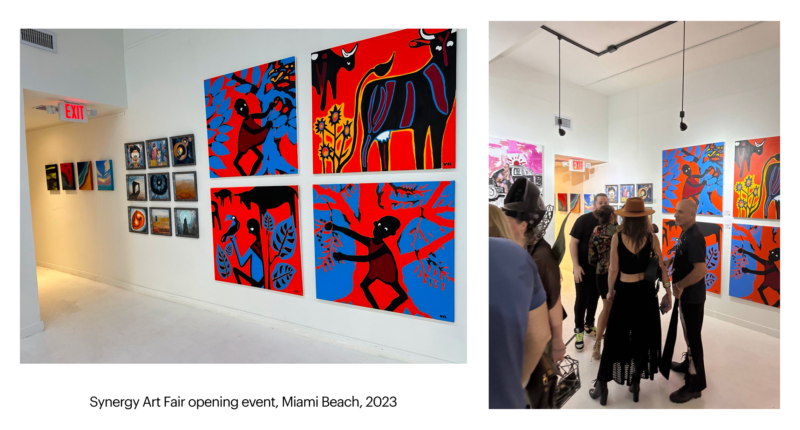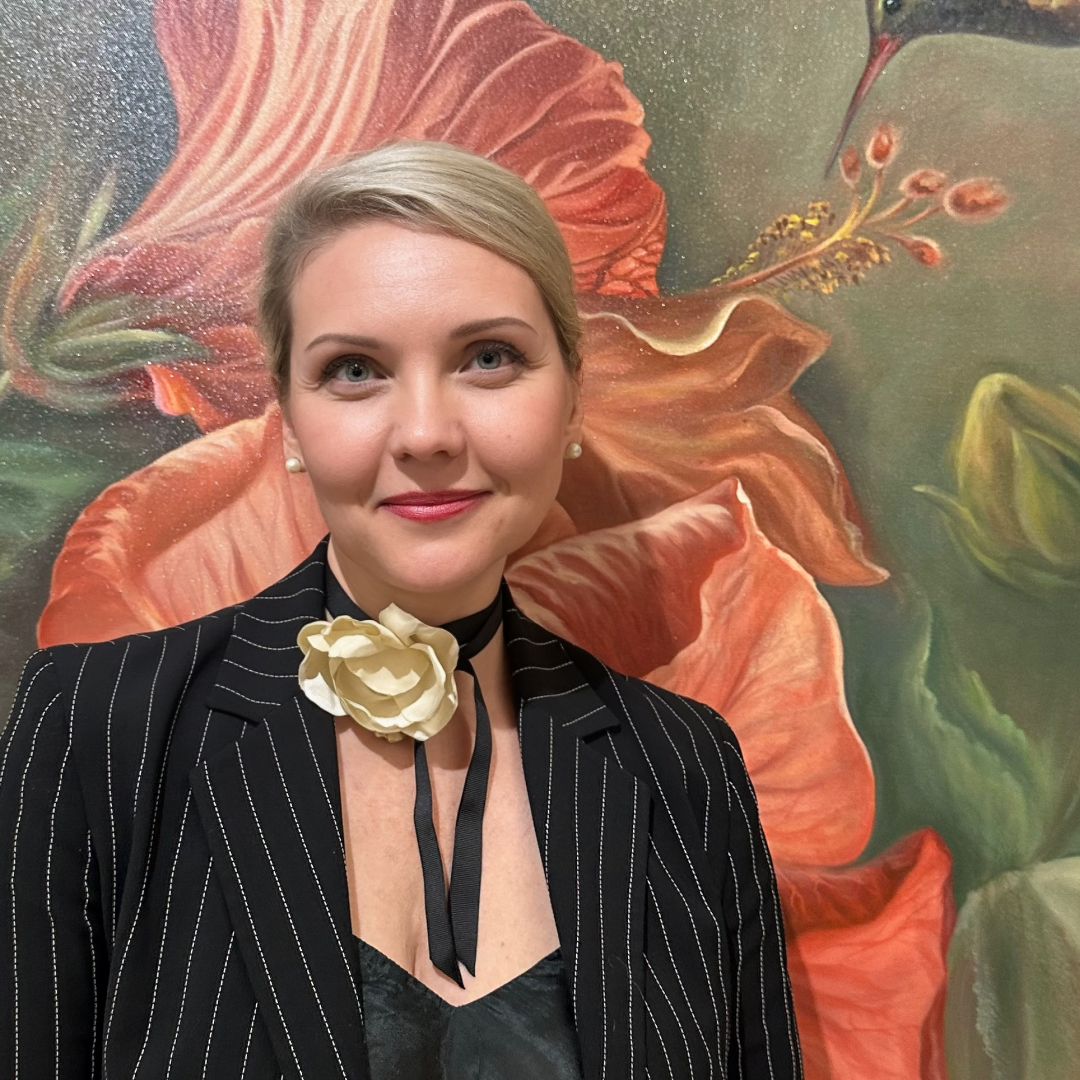Art Basel Miami wrapped up the year in art, featuring more than 300 established and emerging galleries from around the world. Miami Art Week, which traditionally takes place around Art Basel, brought together over 20 international art fairs, 1,200 galleries, and thousands of artists.
In Miami, Fine Art Shippers caught up with Julia Sysalova, the curator of this year’s edition of Synergy Art Fair, which was held as part of Miami Art Week. We discussed the role and place of heavyweights and smaller institutions and projects in the overall art industry ecosystem, as well as the tools that artists need to adopt to succeed in today's highly competitive art world.
Julia Sysalova is an Athens-based curator, art critic, and educator. She is also the founder of the Art Communication Online School, where she teaches artists how to build their career path.
Reflecting on Art Basel Miami 2023: Interview with Synergy Art Fair
To begin with, I would like to briefly define Art Basel’s three “faces.” What is the difference between its editions in Switzerland, the United States, and Hong Kong?
Julia Sysalova: Art Basel in Basel, Switzerland, considered the flagship edition of the fair, displays more traditional art forms. In contrast, Art Basel Miami typically features more prominent contemporary names, making it a major event in the contemporary art scene. Art Basel Hong Kong, from my perspective, leans towards showcasing more technologically advanced contemporary art. These variations are less about creating a hierarchy and more about representing different facets of the art world. Each fair acts as a mirror to the current trends in the art scene.
This year, you curated Synergy Art Fair which took place during Art Basel Miami Week. What was your approach as a curator? Did you look to identify any common themes or messages in the participants’ works?
Unlike biennales or curated museum exhibitions that tend to explore the evolution of art and its societal impact, art fairs serve more as forums, showcasing the variety present in the art world today. In our exhibition, we didn't set a specific theme. Yet, our featured works did explore current topics such as femininity, identity, human-nature interactions, etc.
This aligns with the overarching approach of Art Basel Miami: Despite its commercial focus, the fair still highlights a significant amount of conceptual socially and politically engaged art. This year's edition, for instance, showcased works from established artists, such as Ai Weiwei’s Lego piece “Washington Crossing the Delaware,” alongside emerging talents featured in the “Positions” sections.

What were your selection criteria for including artists in Synergy Art Fair?
The invitation to curate the fair came from its founder and director, Artem Mirolevich, during a live online session with the alumni of my online school. So, I thought it would be logical and beneficial for everyone to include my students and alumni, an idea he enthusiastically supported. Indeed, the exhibition was a success; we received many compliments on the quality of the works. For the artists, it was an invaluable experience in the broader art world and market.
Can you tell us more about your school?
Together with my partner Maria Grammatina, I established the Art Communications School about a year and a half ago. In this program, I teach artists how to deepen their practices and promote their work. My goal is to help them bridge the gap between their personal and artistic identities, which they often perceive as separate. This perspective is vital in today's art world, where personal narratives are increasingly important. Artists undergo a significant transformation during the program. Once they realize and embrace the integrity of their creative and social personas, they can better express themselves in the broader world.
Now, I would like to talk about the role of satellite art fairs in the Art Basel Miami ecosystem. What’s your perspective on that?
Art fairs like Art Basel and Art Basel Miami typically collaborate with well-established galleries. Artists usually participate in these fairs through these galleries, either as regular partners or as special invitees. However, this approach often sidelines many emerging artists, which is where alternative and satellite fairs play a vital role. They offer these artists a platform to gain exposure and hands-on experience in the art market.
As an example, Synergy Art Fair doesn’t rely on galleries. By showcasing smaller projects, such as my school, and welcoming a broader audience, it makes art more accessible to potential buyers, while also supporting the artists.

Lastly, what piece of advice would you give to artists making their first steps in the art market?
I would like to highlight that the real value of smaller-scale fairs like Synergy Art Fair lies in their ability to facilitate direct contact and networking. They offer artists, especially those at the beginning of their careers, the chance to connect with potential collectors and collaborators. So when deciding where to present their works, artists should always consider the potential of an art fair, gallery, or institution to open more doors for them. I also recommend that young artists be mindful of how their work is presented in these settings. To sum it up, it’s all about understanding the rules of the game and making informed decisions.
Interview by Inna Logunova Photo courtesy of Julia Sysalova
